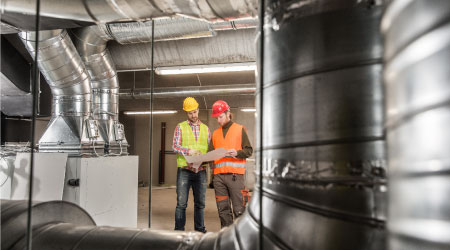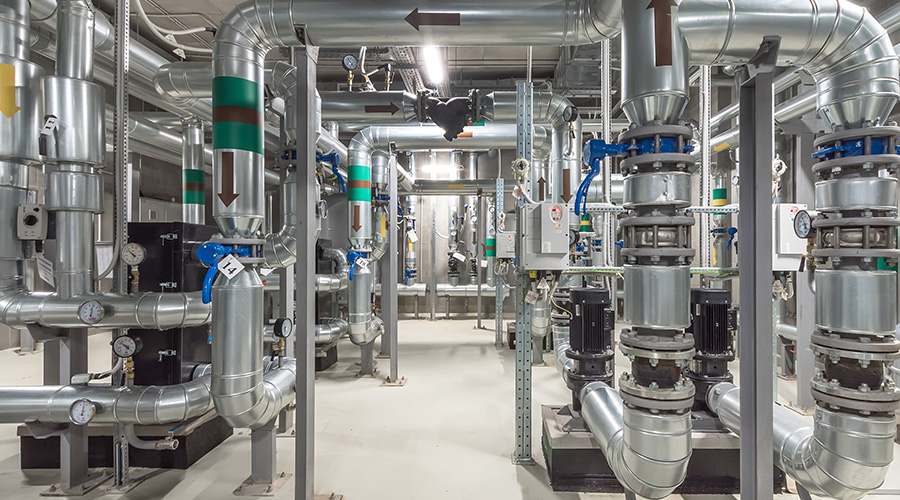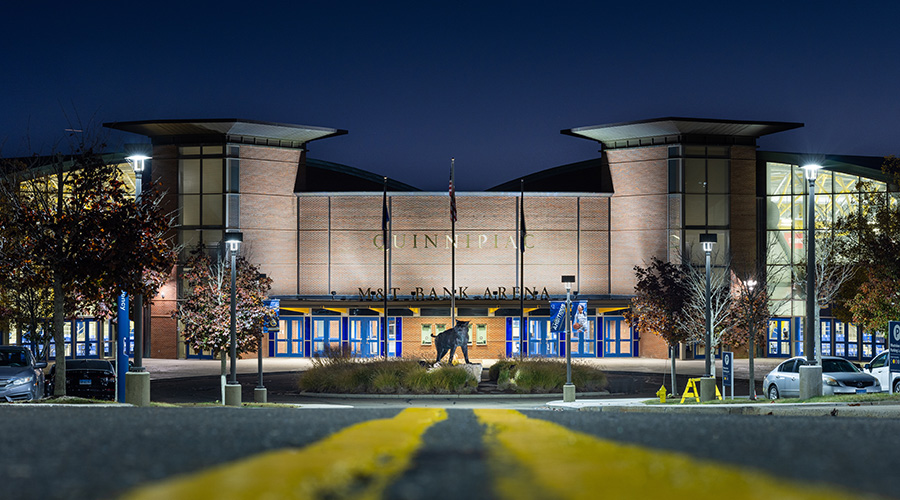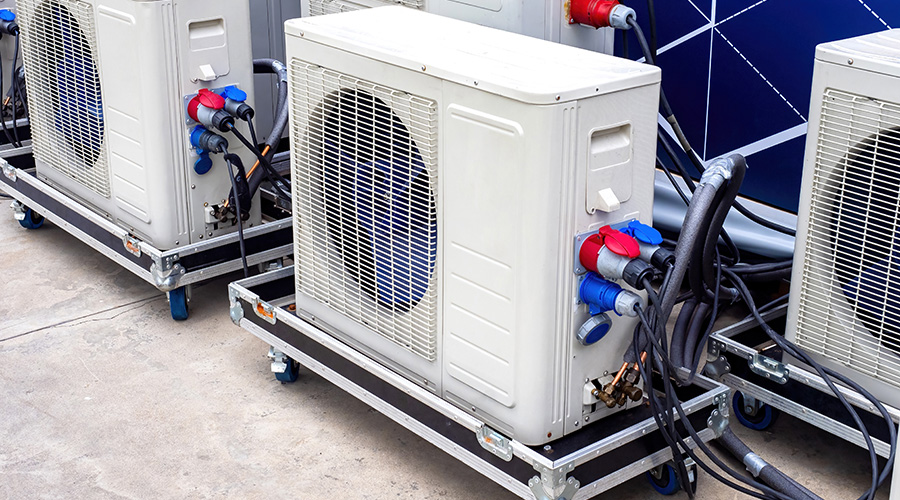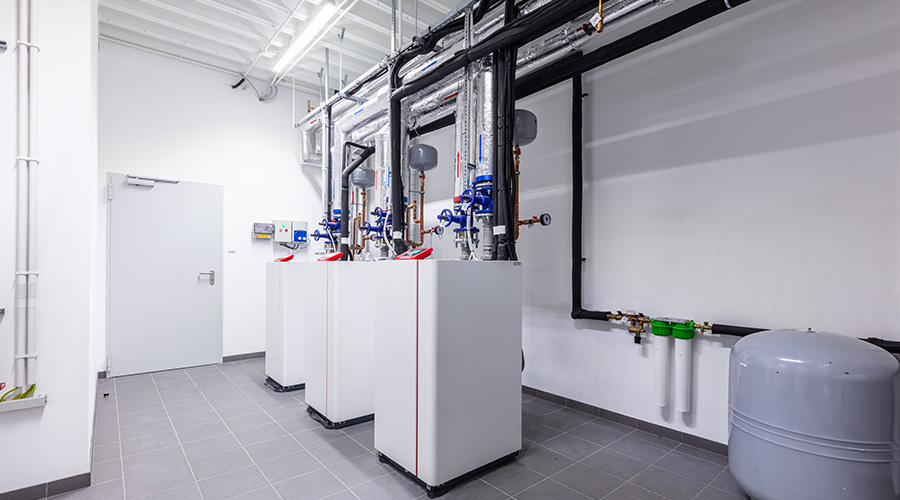HVAC Industry Has Never Been More Essential
HVAC leaders discuss the state of the industry as it moves past the pandemic stage.
By Dave Lubach, managing editor
As the COVID-19 pandemic continues to loosen its grip on the country, many industries are reassessing the last two-plus years and considering how they’re emerging from these unprecedented times.
Leaders in the HVAC industry are among those looking back at this historical point in time and wondering what they’ve learned, and where they’re headed in the years to come.
“Our industry learned it has never been more essential,” says ASHRAE President Mick Schwedler. “I don’t necessarily know that we learned it, but the general public has learned it. They saw that in order to reopen their businesses, or to get their children back into schools and get students and staff in there in a healthy manner, they needed that guidance from us.”
Schwedler and other leaders in the HVAC industry gathered for a roundtable discussion at February's AHR Expo in Las Vegas, an annual industry get-together of manufacturers, contractors, media, and others across the world. Joining Schwedler on the panel was:
Among the topics discussed during the hour-long “State of the HVAC Industry” were lessons learned during the pandemic, finding the next generation of HVAC technicians and training them, supply chain issues, and technology advancements.
What follows is a summary of the roundtable discussion of issues that have affected facility managers during the pandemic and HVAC concerns they may have in the near future.
IAQ impact
Before the pandemic, many people never gave a second thought about the quality of the air circulating around the office buildings, schools, or healthcare facilities they occupy during the day. Once the pandemic hit, indoor air quality (IAQ) became a common term for building occupants.
Poll after poll of indoor employees since the pandemic started have indicated that IAQ has emerged as one of the leading factors for people deciding where to work. IAQ also has factored into parents’ decisions about where to send their children for both K-12 and higher education institutions. The pandemic placed an increased emphasis on how people felt about the air they breathe all day.
“I think a lot of the innovations around IAQ are around giving real-time information not only for those who are managing the buildings, but those who are occupying them,” says MacGillivray. “Parents are asking schools if it’s safe to be in those classrooms. Teachers are asking about that. I think that’s a really important thing.”
IAQ has been on the radar of facility managers since well before the pandemic hit, but increased attention from the general public and building owners who may otherwise rely on facility personnel have placed extra emphasis on the HVAC industry to ensure future equipment exceeds regulatory standards.
“We shouldn’t be thinking of those minimum standards anymore,” MacGillivray says. “We should be thinking about what optimal standards are. Maybe a building was designed at minimal standards, but what can we do — I know cost is a factor — in terms of augmenting that? Can we retrofit, or do we have to go back to the drawing board? We just can’t go back to the minimum. We have to look at what the optimum is.”
Labor shortage and training
Like many industries, “The Great Resignation” has hit the HVAC industry. In turn, facilities departments across the country are losing employees due to retirement, more lucrative opportunities elsewhere, or leaving the industry entirely.
Finding the next generation of technicians, and providing effective, quality training to keep those technicians moving up through the ranks and staying in the industry are problems that facility managers share with the HVAC industry.
“We’ll see a huge amount of retirements, if we haven’t already,” says Yurek, when asked about the industry’s top challenges the next five years. “Just getting people into the industry and the workforce trained and ready to go.”
One hiring aspect that managers should consider when searching for new technician candidates is to rebrand their job search process.
“Part of the gap is redefining who our technical workforce is,” Guarino says. “We need to change the narrative from being tradesmen to being professionals, true craftsmen. Most of the schools are called trade schools, and you learn the basics of the trade. But that just gets you started. All of us in the industry need to focus on raising that bar.
“That’s our challenge — to start working together more so that from a training standpoint, there are various levels of training. It’s getting us coordinated better. The career path needs to be clearer, telling (candidates) you can go from here to here, and compensation and everything else will follow. That’s going to be our challenge in the years to come.”
Guarino’s NCI organization focuses its efforts on training, and he discussed some ways managers can help their technicians get the help they need to move up in their positions.
“There’s some good online training that’s reinforcement training, more than ever,” he says. “We’re very focused in the next year on the YouTube-like, short things where you can just pop open on your phone and see how you do it. We need to get to that point, because when your technicians are in the field, they don’t have time to pop open a laptop or manual and find the answers, they need to get to it right away. That’s part of the training process — knowing how to find the answers — so we see that as a challenge.”
Supply chain issues
Supply chain concerns have affected all kinds of industries across the globe, and HVAC is no exception. For managers who are waiting on products to complete projects in their facilities, the wait might be a bit longer.
“This isn’t going to fix itself this year. It’s going to be a tough year,” Gee says. “Even if you can build it, you have to find a way to ship it.”
While many managers are at the mercy of their suppliers, Gee offered one bit of advice that could go a long way toward helping managers get what they need, when they need it.
“The customers who communicate, partner and work with their suppliers are at the top of the line,” he says. “If you’re a large volume customer, yet you’re erratic with your ordering, you get knocked down the list, because you’re just really hard to serve.”
Looking ahead
Like the rest of the country, the roundtable participants were ready to put the pandemic in the rear-view mirror and focus on the industry’s future. Here is a sampling of some of the panel’s predictions of what managers can expect to see from the HVAC industry in the coming years.
Yurek: “The next really big challenge is the refrigerant transition that we’re going to see. The difference between the current A1 refrigerants and the A2Ls that are being considered for most products, there is really no difference. They’re pretty much exactly all the same based on the testing and research that ASHRAE and AHRI did as well as others. We’ve shown they can be used safely, like the A1s, but the technology is going to be a bit different. The final one is the whole electrification conversation, and what does this mean to the industry, and what does this mean to buildings where are our products are being installed and used? How do we address that, and what impact will that have on the supply chain?”
Schwedler: “I don't think we know yet. There are going to be innovations that happen over the next three years that we don’t know about yet. From what we know today, the innovations to reduce environmental emissions are going to hit a lot of people. It’s not just legislators, it’s not a political thing. It’s a real business thing, and our response and our innovations to reduce our environmental emissions is going to be paramount the next five years. But I think there’s something that’s sneaks up on us that maybe the visionaries of the world might see, but we haven’t seen yet.”
MacGillivray: “Sometimes people just need to follow the standards. We do have to talk about what those best practices are, and I hope we don’t go backwards in terms of what we learned during this pandemic. It’s been important for COVID-19, but if we’re saying that MERV 13 systems are what’s keeping us healthy and productive, then I think the innovation going forward is proving that is what you’re actually getting in the space. That’s going to help commercial buildings bounce back.”
Guarino: “Where I think this industry can really see the change is at the street level. The equipment is some of the best we’ve ever had in the industry, but it doesn’t matter if what it’s connected to doesn’t work. The other part is consumer education. We’ve learned that we need to take the time to educate the customer, not only talking CFMs or BTUs and make their eyes glaze over. I’m talking about actually saying, ‘Come with me. Let’s explore your building together.’”
Dave Lubach is managing editor for the facilities market. He has seven years of experience covering facilities management and maintenance.
Related Topics:








